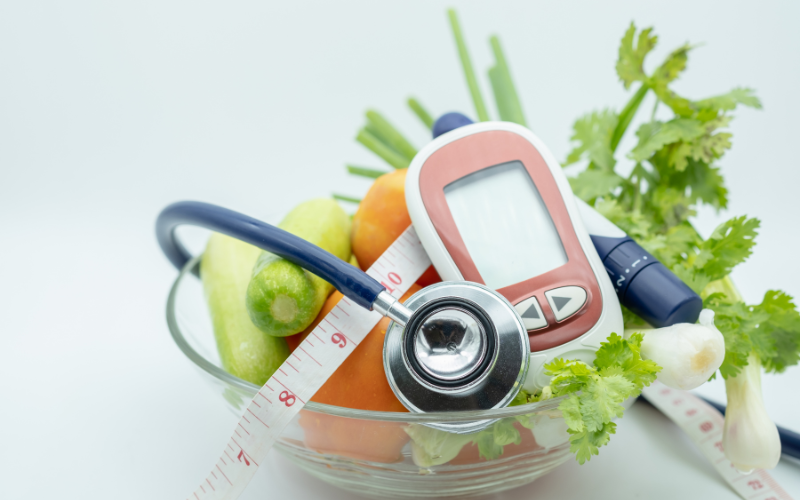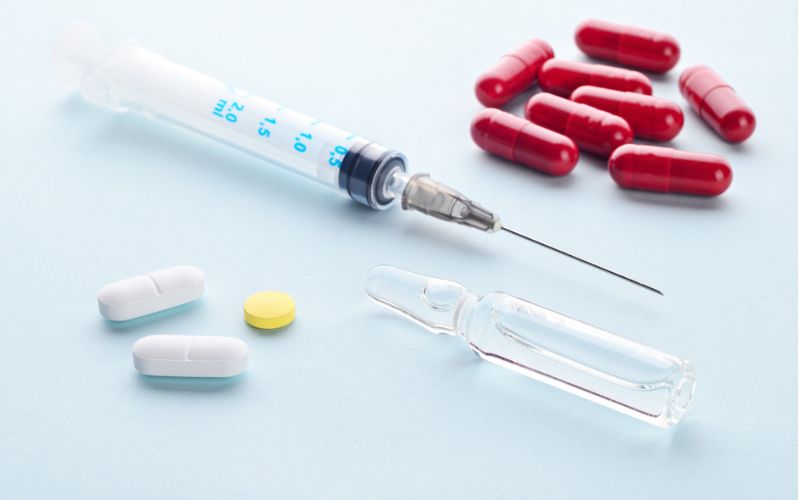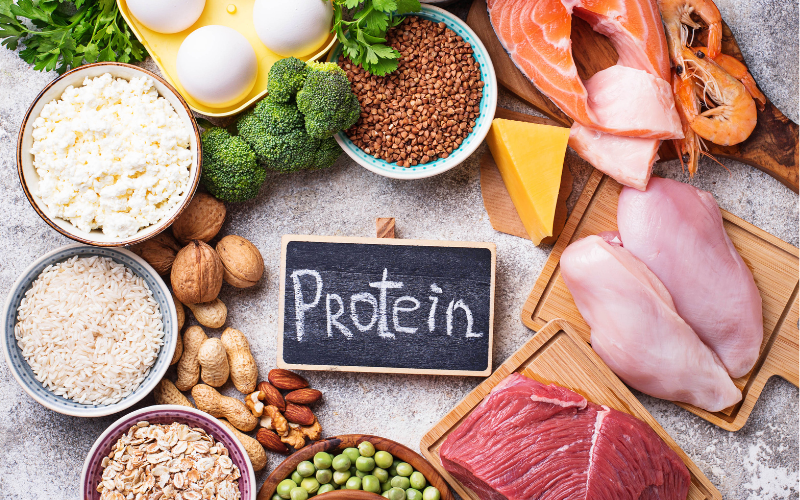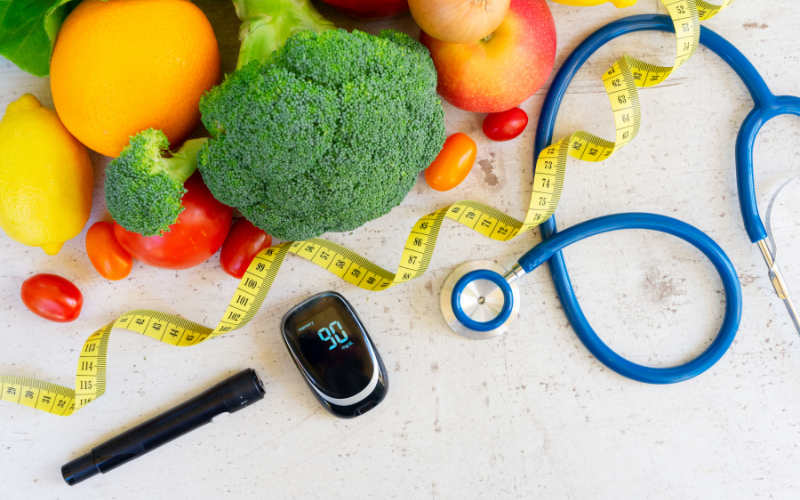New diabetic diet plan: Specially formulated for type 2 diabetes and pre diabetes

A healthy diet is vital if you’ve been diagnosed with either type 2 diabetes or prediabetes, a precursor to full diabetes. A balanced diet can help keep blood glucose levels within the target range and reduce the risk that you will develop complications related to your condition.
That’s why Dietlicious has created a meal plan specially for those with prediabetes and type 2 diabetes. Diet is such a powerful tool in the management of diabetes, that some individuals with prediabetes or type 2 diabetes may be able to manage their condition with diet alone. For those on medication, it may be possible to reduce your medication and even go into remission from diabetes, with the right, healthy diabetic diet.
What is a good diabetic diet?
A good prediabetic or diabetic diet will ensure at least adequate but ideally optimal nutrition. Whether your diabetic diet plan is sufficient comes down to three key points. Firstly, eating foods that have been proven to be beneficial to good health, including vegetables and fruits, wholegrains, dairy, nuts, legumes, seafood, meat and eggs. Secondly, limiting high-energy, high carb, nutrition-poor foods and drinks, such as sugary drinks, chips, cakes, biscuits, pastries and lollies. And thirdly, ensuring fat intake includes mostly unsaturated fat, and only small amounts of saturated fats.
What the Dietlicious Diabetic Diet Meal Plan offers, at a glance
|
What’s in?
|
What’s out?
|
|
✓ Natural, unprocessed foods |
✖ Processed foods with artificial ingredients |
|
✓ Low carbs from unrefined, whole sources |
✖ High carbs, refined carbs and sugar |
|
✓ High protein from healthy lean sources |
✖ High calories |
|
✓ Low fat, from healthy sources |
✖ High saturated fat |
|
✓ High nutrients and antioxidants |
✖ Nutrient poor foods |
|
✓ Plenty of vegetables and fibre |
✖ Additives and preservatives |
|
✓ Low salt |
✖ High salt |
More detail about our new Diabetic Meal Plan
This meal plan is a five day menu of approximately 1200 calories per day. This amount of calories will promote weight loss for both women and men, without being impossibly hard to maintain. This calorie level also allows for some flexibility for those that want to add in a piece of fruit (recommended for a boost in important nutrients and fibre), a cup of coffee, or a healthy snack.
The plan includes daily breakfast, lunch, dinner and a side/snack. Regular meals are spaced out evenly through the day, to spread the calories and macronutrients. This can be beneficial for those taking insulin or other medications – some doctors do recommend keeping a steady flow of blood sugars by spreading out meals. While intermittent fasting has been shown to be an effective tool to lower blood sugar and even bring on remission in some diabetics, it should not be undertaken without doctors’ supervision, due to the risk of hypoglycaemia (dangerously low blood sugar). Check with your doctor or dietitian to see whether fasting is right for you.
The meals on this diabetic diet plan have been specially selected to offer plenty of variety of ingredients which is critical for optimal micronutrients and antioxidants, both of which are keys to overall good health. There is a good mix of protein types without a heavy reliance on red meat. The mix of proteins and vegetables is Mediterranean in nature and is designed to provide healthy fats, low saturated fat and to decrease inflammation. Note that the large scale PREDIMED study showed that a Mediterranean diet reduced the risk of developing type 2 diabetes by as much 52%.
This is also a low sodium diet, that meets the guideline intake of less than 2000mg per day. Whilst salt does not directly impact blood sugar levels, it is an important part of diabetes management as too much salt can raise blood pressure.
Lastly, you’ll of course be wondering about carbs. This diabetic diet meal plan is low in carbohydrate. Meals on this plan fall under 30g carbs per meal, with the daily total not exceeding 70g carbs per day. Lower carb eating has been shown to be safe and effective for type 2 diabetics for lowering blood glucose levels, blood lipids, blood pressure and weight loss. Carbohydrate choice is key, with healthy, unrefined carbs being slower to hit your bloodstream. In addition, this plan includes moderate to high fibre which is associated with better gut health, lower body fat, appetite control and weight loss.
Carbohydrates and diabetes
Many diabetics are confused about carbs or downright scared. There is a lot of misinformation about what types of carbs you should be eating and in what quantities. There are also some excellent guidelines you can follow, but it does take a little work initially to stay within the guidelines. You may need to constantly monitor your blood sugars after eating different sorts of foods, so you can get a feel for how carbohydrate levels or a macronutrient mix will impact you. It can be a very individual thing. Rest assured that before long, eating the right amount and type of carbs will become intuitive for you.
Current research shows that lower carb eating can be safe and useful for people with type 2 diabetes – it can assist with lowering average blood glucose levels in the short term (up to 6 months). Also useful in assisting with weight loss (up to 12 months), triglycerides, cholesterol and blood pressure (up to 24 months).
Low carb eating is not yet recommended for children under 18 (due to a lack of evidence) or for those with other medical complications such as kidney issues. Always check with your doctor for personal advice before embarking on a new eating regime.
Besides a healthy diet, what else can impact management of your diabetes?
You. Everyone is unique and how your body manages the food you eat is different. Your diabetes may be less or more advanced. Whether you take medication to manage your diabetes can change how your body copes with your diet too.
Physical activity levels. Regular exercise, even if it’s gentle can help you manage your blood glucose levels, cholesterol and triglycerides and well as burn calories to help you maintain or lose weight.
Other foods or drinks consumed. Outside of healthy meals on a plan such as this, it’s often additional foods such as snacks or sugary drinks that can often be culprits in blood sugar spikes.
Hydration. Dehydration can impair blood sugar response. Drinking adequate water not only fights dehydration, but it can also help your body get rid of excess glucose.
Your weight. If you’re above a healthy weight, then even a small weight loss can make a huge difference to managing your diabetes. Aim for just a 5-10% reduction in your overall bodyweight to start.
Diabetes is a serious condition and there is not a one size fits all approach. You should always take responsibility for self-monitoring and adjusting your eating and lifestyle habits to suit your condition. All diabetics should regularly monitor their own blood sugar levels and watch the impact of the foods they eat.
If you’re looking for more help, check in with your doctor or a diabetes dietitian for personalised advice. See here for dietitian services.
Review the Dietlicious Diabetic Meal Plan here
More information
Here are some other blogs you might find useful.
Dr. Joanna McMillan: Best Foods to Eat with Diabetes
How to reverse prediabetes naturally – top 5 tips





